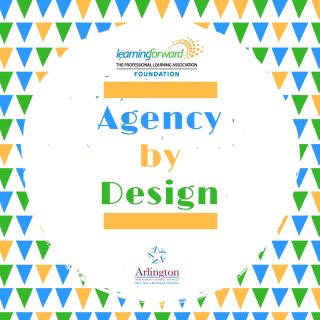How many of you have a “professional junk drawer”? This is where you keep the miscellanies you are not quite ready to discard. A junk drawer reveals a lot about a person. It’s much like a time capsule that reflects your life. What’s in your professional junk drawer?
My junk drawer holds a curious mixture of memories and functionality. Personal notes, pin drives … a bin of accumulation. Prominent in this mix are my name badges from the Learning Forward Academy. These badges are puzzle pieces from my past that shaped my professional life.
Hello, My name is Dawn
When I joined the Academy, my name badge was a piece of paper in a clear plastic holder with Dawn printed in large letters. I came to the Academy by myself and wasn’t certain exactly what to expect. Walking into a room full of strangers that first day, I felt isolated and vulnerable. Directing professional learning in my district, there were time-sensitive projects and staff to support. I questioned if I had the time to commit to the Academy.
What I soon learned was that I would determine the focus of my Academy work. This customized approach was different from the other professional learning I had experienced. The Academy work was my district work. My responsibility was to bring an authentic problem of practice (PoP) from my workplace to the Academy and design a learning plan to address this challenge.
My PoP focus was to implement and sustain a coherent, collaborative and aligned professional learning system in my district. For the next 2 1/2 years, I studied the problem, learned research-based practices, deepened my knowledge and skills, developed solutions, then applied the learning. Understanding how to implement the Standards for Professional Learning, innovation configurations, change theory, the continuous improvement cycle and program evaluation strengthened my learning plan.
My PoP evolved from a basic statement to a comprehensive, inquiry-based, and personalized learning plan. This plan provided a detailed blueprint of how to develop, implement and assess the effectiveness of my PoP.
The Savvy Six, My Squad
My initial jitters began to subside after I was assigned to a team of Academy colleagues. Our diverse roles and perspectives provided different lenses through which I viewed my work. We named our group The Savvy Six. This team name was added to my nametag, which provided a distinctive group identity. The people who were once strangers were now collaborators and critical friends in a unique community of practice.
This small group collaboration fostered a knowledge and idea exchange that built our social capital. The PoPs of the Savvy Six, a deliberately diverse group, contributed to my learning because members had unique backgrounds and skills. Although much of our collaboration occurred during the Academy, we also spent informal time together after Academy hours and through virtual communication between Academy sessions. Time was also allocated to tap into talents of members beyond my Savvy Six group.
Information became knowledge through this shared social experience. Relationships were a force multiplier for our learning. Hargreaves and Fullan (2012) describe this phenomenon as the “moral imperative realized”, i.e., how people motivated with good ideas tied to action with others can ultimately make an impact.
The collegial Academy design also aligns with Jensen’s research (2016) emphasizing the key to high performing systems is a focus on collaborative professional learning “built into the daily lives of educators and reinforced by policies that allocate time for collaborative professional learning.” The Savvy Six Squad was an effective way to accelerate learning through collaborative professional learning.
Conference VIP
My junk drawer also has my name badges from Learning Forward’s Annual Conferences. These yearly conferences follow the Academy and provide an opportunity to extend the learning. While some may think it curious to keep these paper nametags, for me, they represent passports to my Academy learning adventure. The conferences provide avenues to engage with thought leaders from around the world in cities throughout the country. As an Academy member, your learning is literally linked with the cities in which you learned…Orlando, Dallas, Washington DC, Nashville, Boston, Vancouver, etc. For example, an Academy member may say, “Remember when we learned to use logic models in Vancouver?”
Academy members have VIP priority to conference sessions. I selected sessions that would inform my PoP and Learning Plan. Sessions on program evaluation piqued my interest and as a result, I began to think more reflectively on how to assess the outcomes of professional learning.
My Academy “Eureka moment” was related to the evaluation process, specifically learning how to measure and report progress toward solving my PoP. Knowing how to build an evaluation framework to assess progress in my PoP transformed my practice. I could now apply these newly acquired skills in other areas to measure growth. Measuring impact heightened system accountability because the focus shifted to linking professional learning with educator practice and student achievement. The changes in my district’s professional development system as a result of my Academy learning were evidence-driven, measureable and sustainable, not temporary “windshield wiper” changes.
Dawn Wilson, Coach
After I graduated from the Academy, I knew that I wanted to be a coach and help others experience high levels of learning. I admired how my coaches facilitated the learning sessions, the feedback process, and supported the learning virtually throughout the Academy. The coaches also created a culture of trust and engagement by implementing a variety of learning designs that gave structure to the content.
Fast forward to 2017 and I am now a Learning Forward Academy Coach, with the privilege of supporting others in their learning. As an Academy coach for the Class of 2018, I wear my nametag as a badge of honor. I have the privilege of helping develop the capacity of over 50 extraordinary educators to establish and sustain highly effective professional learning in their organizations. Equally as important are the relationships and learning networks built with these Academy members.
When I look back into my professional junk drawer, I don’t see rubble or remnants. I see nametags as reticular reminders of my Academy learning journey, the amazing colleagues who shared it, and how the experience impacted teaching and learning for educators and students.
Why the Academy works
The genius of the Academy is that the work is the genuine, everyday professional work of the participants. Personalized learning plans are a natural harvest of the Academy members’ efforts in their organizations, not extra work disconnected from their professional purpose. Collaboration among Academy members is the “secret sauce” that deepens the learning. The diverse backgrounds of Academy members enrich the experience.
References
Hargeaves, A. & Fullan, M. (2012) Professional capital: Transforming teaching in every school. Teachers College Press. New York, NY
Jensen, B. (2016) Beyond professional development: Teacher learning in high performing countries.





